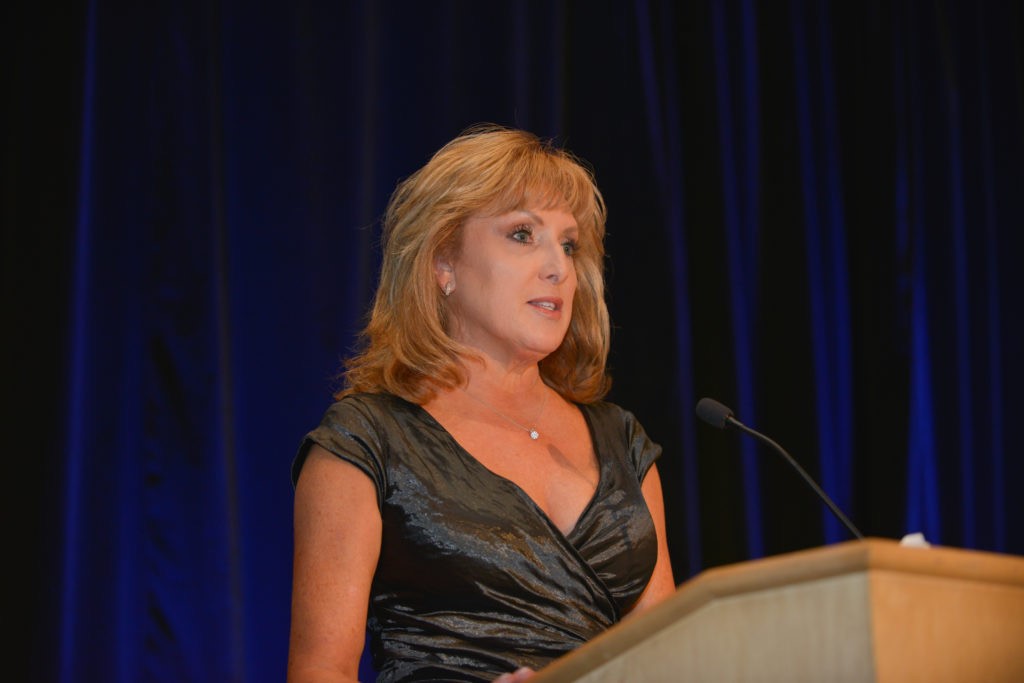
A new Iowa Business Corporation Act was enacted last year. Like Iowa’s current corporation statute (the “Act”), the legislation (HF 844) is based on the Model Business Corporation Act (“MBCA”) developed by the Corporate Laws Committee of the American Bar Association.
The MBCA is the basis for the corporation statutes in the majority of states. Various updates to the MBCA have occurred from time to time, and Iowa has adopted amendments to the Iowa Business Corporation Act as a result.
In 2016, the ABA Corporate Laws Committee published a new edition of the MBCA. It is the first comprehensive revision since 1984 (which Iowa adopted in 1989). The 2016 edition is in part a restatement of the MBCA that includes all amendments made since the previous version, but it also makes stylistic and editorial changes that are clarifying and adds important and useful provisions based on developments in corporate law around the United States. The Corporate Laws Committee of the Business Law Section of The Iowa State Bar Association met over a three-year period to work on proposed legislation for Iowa that resulted in the new Act.
Highlights of the New Act
Remote-only meetings of shareholders
The new Act includes a provision allowing for remote-only shareholder meetings. The previous Act did not include such a provision. During the recent pandemic, Iowa business corporations had to rely on the governor’s emergency proclamations to conduct remote-only shareholder meetings. The new Act provides that unless the bylaws require a meeting of shareholders to be held at a place, the board of directors may determine that any meeting of the shareholders need not be held at a place and may instead be held solely by means of remote communication, provided that the corporation implements measures to: (1) verify that each person participating remotely as a shareholder is a shareholder; and (2) provide that shareholders have a reasonable opportunity to participate in the meeting, including an opportunity to communicate, and to read or hear the proceedings substantially concurrently with such proceedings, and to vote on matters.[1]
The new Act also amends other Iowa entity statutes, including Iowa’s nonprofit corporation statute, cooperative statutes, and insurance statutes, to allow for remote-only member or policyholder meetings.[2] The remote-only meeting provisions for the different types of entities (including business corporations) became effective upon enactment of the new Act.[3]
Ratification of defective corporate actions
From time to time, a corporation may determine that, due to a misjudgment or oversight, certain actions may have been invalid. This could occur where there was an over-issuance of shares beyond the amount authorized in the articles of incorporation or where a transaction is within the corporation’s power but there was a failure of authorization as a result of procedural misstep. The new Act includes a ratification process that allows corporations to validate defective actions retroactively while fully protecting shareholder rights.[4] The goal of these provisions is to protect the parties’ reasonable expectations as well as the shareholders’ rights and interests while securing compliance with Iowa’s corporate law. The ratification of defective corporate acts can be adjudicated by the courts as well as accomplished by the corporation itself. This process has proved to be extremely helpful to corporations in other states, including Delaware.
Director duties and liability/liability shield
Iowa’s current Act provides a description of the duties of directors, required standards of conduct, and standards of liability; these remain unchanged in the new Act.[5] The effect of such a liability shield was the focus of a recent Iowa Supreme Court decision (Meade v. Christie, 974 N.W.2d 770 (Iowa 2022)), which is discussed in Stanley Keller’s article on recent decisions relevant to the MBCA. In addition, the previous Act authorized a corporation to include in its articles a provision that limits or eliminates monetary liability for any actions or failures to act subject to limited exceptions.[6] The new Act retains these provisions and authorizes an additional liability shield. Under the new Act, a corporation may include a provision in the articles of incorporation that eliminates or limits any duty of a director to offer the corporation the right to a corporate or business opportunity before it can be pursued or taken by the director or other person.[7] This provision is consistent with developments in LLC law and reflects an increasingly contractual or enabling approach to business law. Such a provision might be useful, for instance, with regard to a private equity investor that desires to have a nominee on the board but conditions its investment on limitation or elimination of the corporate opportunity doctrine because of the uncertainty about its application on account of the investor’s investments in multiple enterprises and specific industries. This provision also may be helpful in the situation of a joint venture or closely held corporation where the participants want to be sure that the corporate opportunity doctrine would not apply to their activities outside of the joint venture.[8]
Officer’s duty to inform
Iowa Code section 490.842 continues to set forth the standards of conduct for officers, including the circumstances in which the persons on whom an officer may rely in discharging his or her duties. Under the new Act, the section is amended to require that an officer: (1) inform the superior officer to whom the officer reports, or the board of directors or the board committee to which the officer reports, of information about the affairs of the corporation known to the officer, within the scope of the officer’s functions, and known to the officer to be material to such superior officer, board, or committee; and (2) inform the officer’s superior officer, or another appropriate person within the corporation, or the board of directors, or a board committee, of any actual or probable material violation of law involving the corporation or material breach of duty to the corporation by an officer, employee, or agent of the corporation, that the officer believes has occurred or is likely to occur. A similar requirement is recognized in agency law[9] and already imposed on directors.[10]
Forum selection provision in bylaws
Under the new Act, a corporation is able to include in its bylaws a requirement that internal corporate claims be brought exclusively in a specified court or courts of Iowa or in any other chosen jurisdictions with which the corporation has a reasonable relationship.[11] Still, such a provision may not prohibit bringing internal corporate claims in courts in Iowa, nor may it require such claims to be determined by arbitration. The term “internal corporate claim” is defined broadly to mean any of the following: (1) any claim that is based on a violation of a duty under the laws of Iowa by a current or former director, officer, or shareholder in such capacity; (2) any derivative action brought on behalf of the corporation; (3) any action asserting a claim arising pursuant to any provision of the Act, the articles of incorporation, or bylaws; and (4) any action asserting a claim governed by the internal affairs doctrine that is not included above. A forum selection provision can be an effective way for corporations to reduce litigation costs and enable Iowa courts to interpret Iowa law in the first instance.
Judicial determination of corporate offices and review of elections and shareholder votes
Under the previous Act, there was no provision for judicial review of elections and shareholder votes and determination of corporate offices. Under a section added by the new Act, the Iowa District Court has authority to determine the following issues: (1) the results or validity of an election, appointment, removal, or resignation of a director or officer of the corporation; (2) the right of an individual to serve as a director or officer; (3) the result or validity of any vote by shareholders; (4) the right of a director to membership on a board committee; (5) the right of a person to nominate or an individual to be nominated for election or appointment as a director, and (6) other comparable rights under the corporation’s articles or bylaws.[12]
Domestication and conversion
The previous Act included provisions allowing for the conversion of a business corporation into another type of entity as well as the conversion of another entity into an Iowa business corporation. The new Act revises and relocates provisions authorizing conversion transactions, and it adds sections authorizing domestication, a procedure by which a foreign corporation can become an Iowa corporation or an Iowa corporation can change its jurisdiction of incorporation, assuming in each case the law of the other jurisdiction also authorizes the procedure.[13]
Medium-form mergers
The previous Act included provisions for merger of a business corporation with another corporation or eligible entity, subject to shareholder approval. It also included a provision allowing for a merger without a shareholder vote when the acquiring entity owns more than ninety percent of the outstanding shares of the entity to be acquired. The new Act adds a provision to permit a “two-step” merger without a shareholder vote following a tender offer if sufficient shares are owned after the tender offer—namely, those owned before and as a result of the tender—to have approved the merger (typically, approval by a majority of the outstanding shareholder votes entitled to be cast).[14]
Corporate records and reports
The previous Act provided rights to shareholders to inspect records. The new Act includes a comprehensive revision of the chapter on that subject to modernize shareholder access to information while protecting interests of the corporation. The organization of this chapter is improved and more comprehensive; importantly, the board can condition inspection upon agreement to confidentiality restrictions.[15]
Benefit corporations
The new Act includes provisions allowing for the incorporation of benefit corporations in Iowa as well as the election of existing Iowa business corporations to become benefit corporations.[16] Unlike an ordinary business corporation, which has been held to have shareholder primacy as a focus,[17] a benefit corporation provides an option to mandate the interests of other stakeholders that are “known to be affected by the business of the corporation” to be at the same level as shareholders.[18] The new Act contemplates pursuit “through the business of the corporation [of] the creation of a positive effect on society and the environment” as well as any other public purpose set forth in the articles of incorporation.[19] Important in the analysis is not just what the corporation does but how it conducts its business and operations.[20] The new Act includes provisions addressing the duties imposed on directors, required “benefit” reporting, and conditions for bringing any shareholder action.[21] With the new Act, Iowa joins the nearly forty jurisdictions that have enacted benefit corporation statutes.
Official Comment
An important benefit of the MBCA is the Official Comment that may be used by practitioners and courts in interpreting and applying in practice various provisions and requirements in the MBCA. The 2016 Revision of the MBCA includes a new set of updated Comments. The Official Comment for prior editions of the MBCA is now out-of-date.
Unique IBCA provisions remain in statute
The new Act tracks the 2016 MBCA but continues to be tailored to reflect Iowa’s experience and preferences. As a result, the new Act includes non-MBCA provisions. These include the community interest provision that allows directors to consider interests other than shareholders’ interests when evaluating a tender offer or proposed business combination,[22] the provision on business combinations with interested stockholders,[23] the foreign-trade zone corporation provision,[24] provisions on names and reinstatement following administrative dissolution,[25] and provisions on filing of biennial reports.[26]
Secretary of State business filings
In other states, including Delaware, the secretary of state’s office allows for pre-filing clearance review of documents as well as expedited filing services for a fee. These services are extremely beneficial to businesses of all types. Although not part of the MBCA, HF 844 includes provisions establishing these services with the Iowa Secretary of State’s office.
Conclusion
With the new Act, Iowa has a comprehensive and modernized statute that should enhance Iowa’s business climate and serve clients and their counsel well. In addition, by updating the Iowa Business Corporation Act, Iowa is able to continue to take advantage of a useful body of law that develops around the United States that will help increase the certainty and efficiency of corporate actions and corporate transactions.[27]
This article originally appeared in the Winter 2022 issue of The Model Business Corporation Act Newsletter, the newsletter of the ABA Business Law Section’s Corporate Laws Committee. Read the full issue and previous issues on the Corporate Laws Committee webpage. It was adapted there from an article that was first published in “The Iowa Lawyer” (August 2021) and is reprinted with permission from The Iowa State Bar Association.
The views expressed in this article are solely those of the author and not Nyemaster Goode, P.C. or its clients. No legal advice is being given in this article.
Iowa Code §490.709. All Iowa Code citations are to citations in the new Act which, with the exception of the remote-only meeting provisions, become effective January 1, 2022. ↑
Iowa Code §§491.17, 515.25, 518.6A, 518A.3A, 499.27A, 499.64, 501.303A, 501A.807, 504.701, 504.702A, and 504.705. ↑
HF 844, §230(2). The enactment date was June 8, 2021. ↑
Iowa Code §§490.145 – 490.152. ↑
Iowa Code §§490.830 – 490.831. ↑
Iowa Code §490.202(2)(d). ↑
Iowa Code §490.202(2)(f). ↑
Model Business Corporation Act (2016 Revision), § 2.02, Official Comment. ↑
Restatement (Third) Agency, § 8.11 (Duty to Provide Information). ↑
Iowa Code §490.830(3). ↑
Iowa Code §490.208. ↑
Iowa Code §490.749. ↑
Iowa Code §§490.901A-490.935. ↑
Iowa Code §490.1104(10). ↑
Iowa Code §§490.1601-.1602. ↑
Iowa Code §§490.1701. ↑
Compare Iowa Code §490.1108A, which expressly allows a board to consider the interests of other stakeholders but does not require it. ↑
Iowa Code §§490.1701, 490.1704. ↑
Iowa Code §490.1701(2)(d). ↑
MBCA, §17.04, Official Comment. ↑
Iowa Code §§490.1704 and 490.1705. ↑
Iowa Code §490.1108A. ↑
Iowa Code §490.1110. ↑
Iowa Code §490.209. ↑
Iowa Code §490.1422. ↑
Iowa Code §490.1621 (currently, §490.1622). ↑
See Corporate Laws Committee, Model Business Corporation Act (2016 Revision), 72 Bus. Law 421, 430 (2017). ↑












